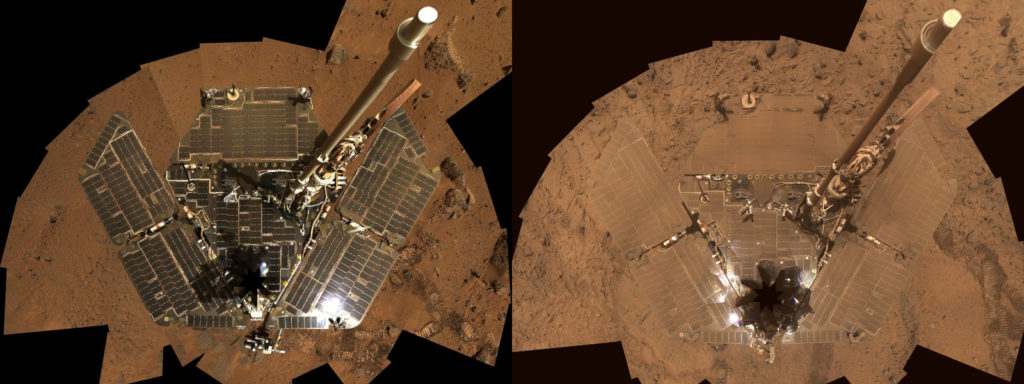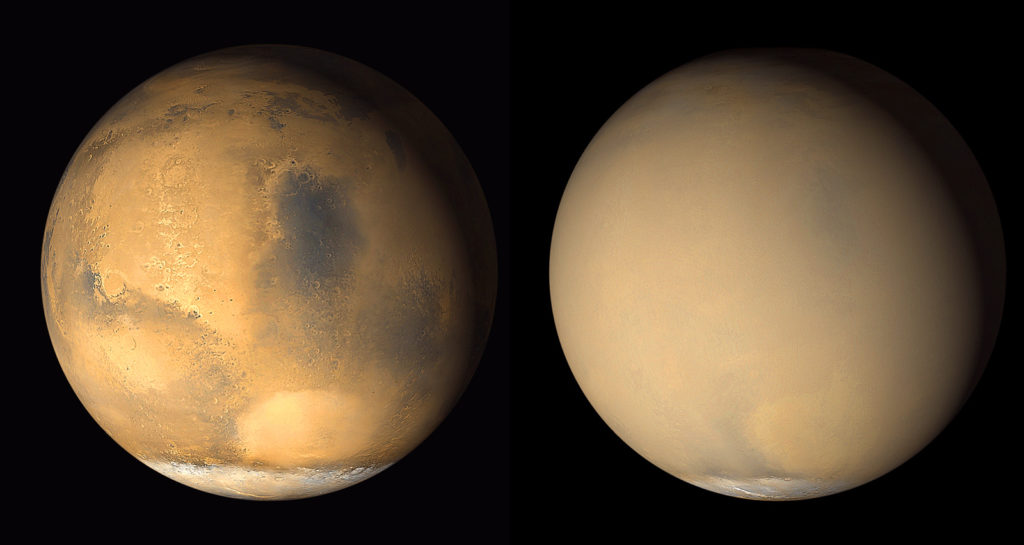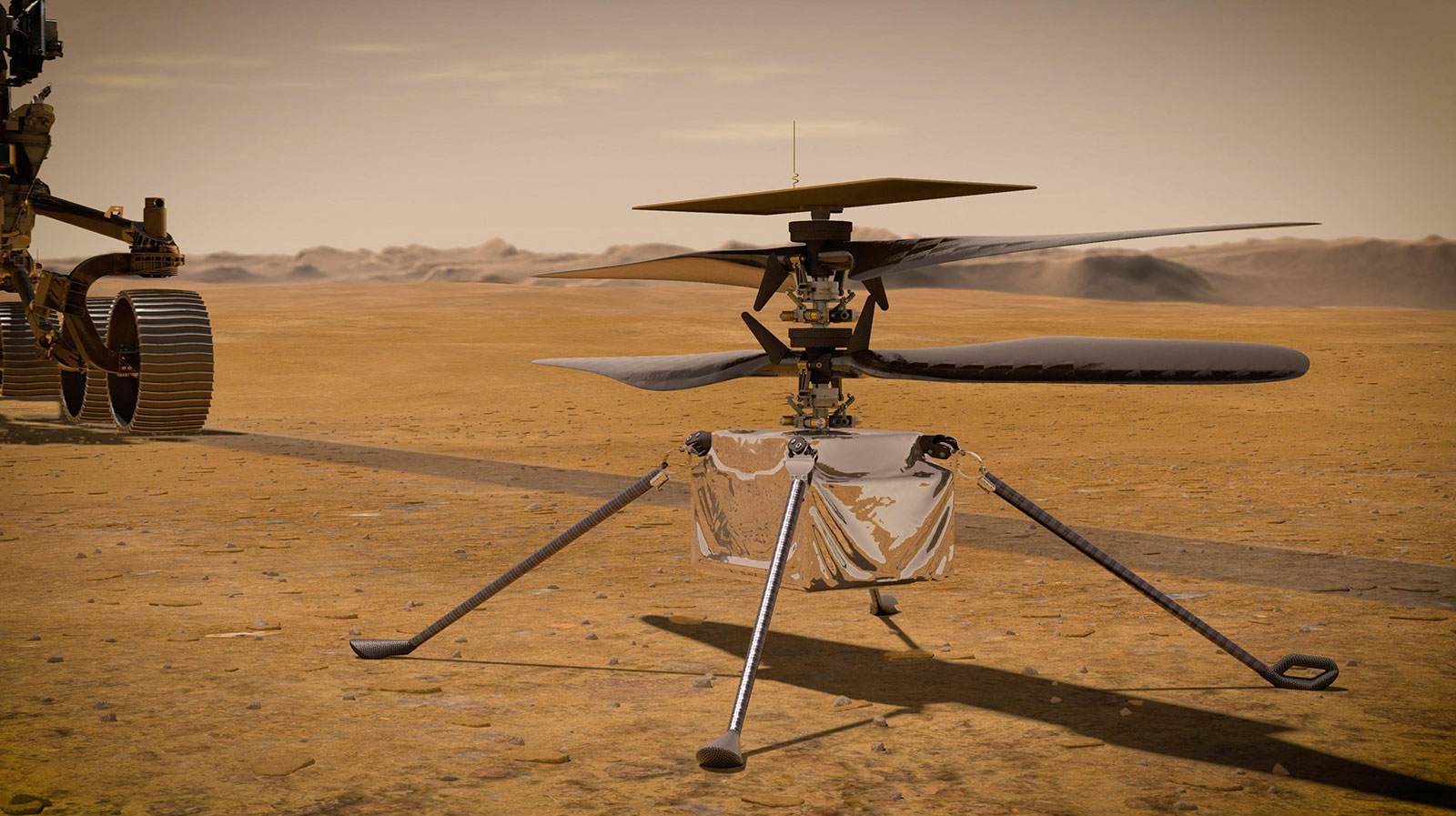Stellar Shine: Solar Panel Drone Cleaning in Space & Martian Maintenance for NASA Rovers
The idea of life on Mars has mesmerized mankind for centuries. Much remains to be discovered, but it is known that the atmosphere on Mars gradually coats solar panels in dust and reduces efficiency, just as it does here on earth. (photo: NASA/JPL-Caltech)
Previously, NASA deployed four roving vehicles – among them ‘Opportunity’ and ‘Spirit’ – that have been exploring sand dunes and sedimentary rock on Mars since 2004. Though originally designed to fulfill a 90-day mission, the solar powered vehicles have beaten all expectations as to the duration of their working life. Spirit eventually stopped working in 2010 when its solar panels became covered in dust, and similarly Opportunity 2019.

The vehicle’s future was uncertain for a long time: The same winds that have blown away dust from the solar panels would cover them again, as Mars experienced unprecedented dust storms. In February of this year, a fifth rover – ‘Perseverance’ – landed successfully on Mars. Unlike its predecessors, it brought a small helicopter, called ‘Ingenuity.’ Whilst the helicopter draws its power from its solar cells, the rover relies on a radioisotope battery.

Even without epic Martian dust storms, a previous 90-day mission by the ‘Sojourner’ rover saw its power output reduced by 23 percent by the mission’s end. Likewise, dust accumulation on Earth reduces solar panel energy production by up to a third in arid regions like the Middle East after one month, unless people maintain them at a high cost.
Bringing “Cleaning Events” to Earth with Drones
A Mars rover can be angled to ‘catch’ surface winds and blow accumulated dust away, but earth’s solar farm panels are fixed in place. ‘Aerial Power’ envisions to bring the cleaning wind to solar panels. It has developed a solar panel cleaning drone that detects the power plant itself. The highly accurate self-flying drones create down-draft over these – row by row. The downward airflow blows away soiling such as dust.
Aerial Power also targets sun-rich, arid regions of the world. Solar power production is booming in these areas, but the cleaning costs are high and logistically challenging.

“Our mission is to reduce operation and maintenance costs for solar energy. We thereby increase panel profitability and enable solar farms to be established in more marginal areas. By using our innovative drone cleaning technology, we aim to decrease the frequency of manual wet cleans. This will make solar energy more accessible and efficient,” said inventor Ridha Azaiz.
The U.S. Patent and Trademark Office – finding the cleaning method novel – granted patent No. US 10,046,857. The China National Intellectual Property Administration recently granted patent CN 106537274 as did the Saudi Authority for Intellectual Property (SA 11961). This is in addition to the previous granting of European (EP 3077882) and Australian (AU 2015285989) patents.

